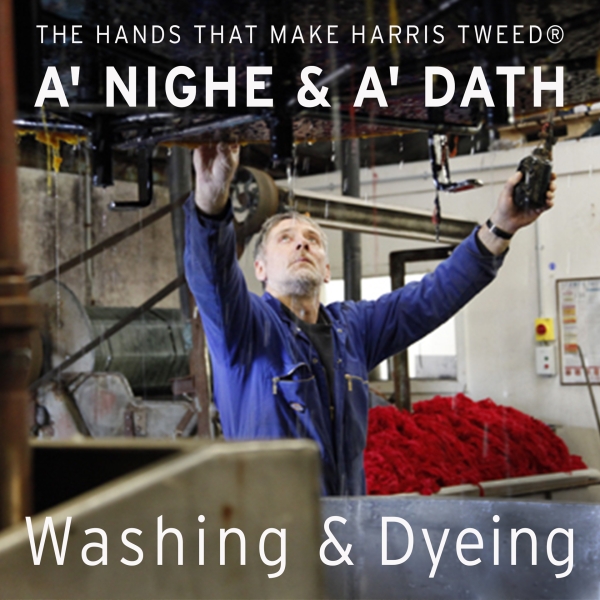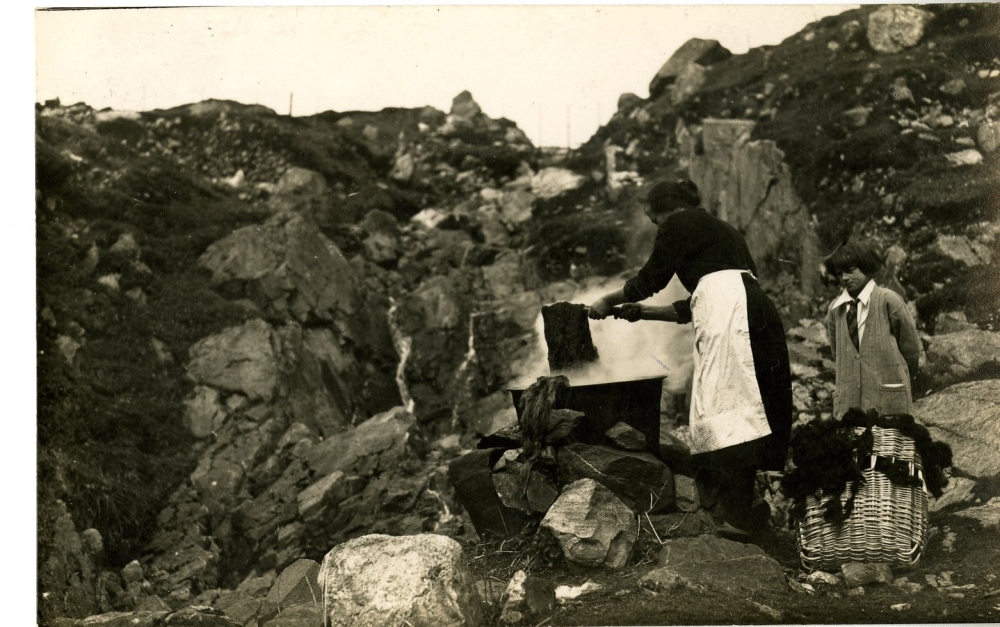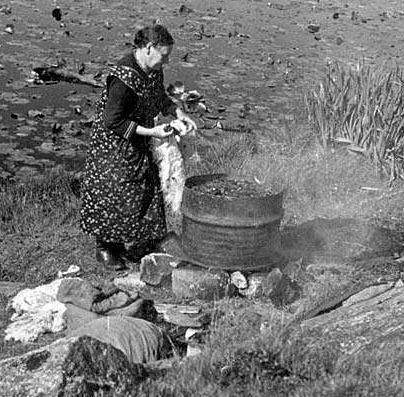Hands That Make Harris Tweed®: Part 1
25th May
The Hands that Make Harris Tweed®
Stage 1: A’ NIGHE & A’ DATH | Washing & Dyeing
When we say that Harris Tweed® is ‘dyed in the wool’, we actually mean it.
It is not the yarn that is dyed, nor the woven cloth, but the raw wool itself. Why? Well, this technique creates a magnificent blend of many different coloured wools together, creating real depth and texture unique to Harris Tweed® cloth. As many of you will know, if you take a closer look at a piece of Harris Tweed® fabric there lies a world of many rich shades and colours.
The wool, which is a mixture of Blackfaced, Cross Bred and Cheviot sheep, is washed and scoured in a solution of soap and washing soda, and then dyed. For a number of different reasons, natural dyes can no longer be used in the production of Harris Tweed® – not least as many of the natural flora of the islands are now protected.
However, we thought many of you would interested in this wonderful insight below into the old ways. This was lifted from an old HTA Archive document and lays out just some of the flowers and foliage used in the old traditional dyeing methods:
– Cow parsley – brilliant yellow
– Young fronds of bracken – primrose
– Tansy – bronze
– Berries of Ivy – grey blue
– Wild Mignonette – yellow green
– Privet – grey blue
– Stinging Nettle – green
– Elderberries – purple
– Papery Skins of Onion – gold
– Heather Tips – primrose yellow
– Roots of Lady’s Bedstraw and Hedge Bedstraw – red
Photograph by Janet Miles
Archive Photographs from Unknown Photographers



